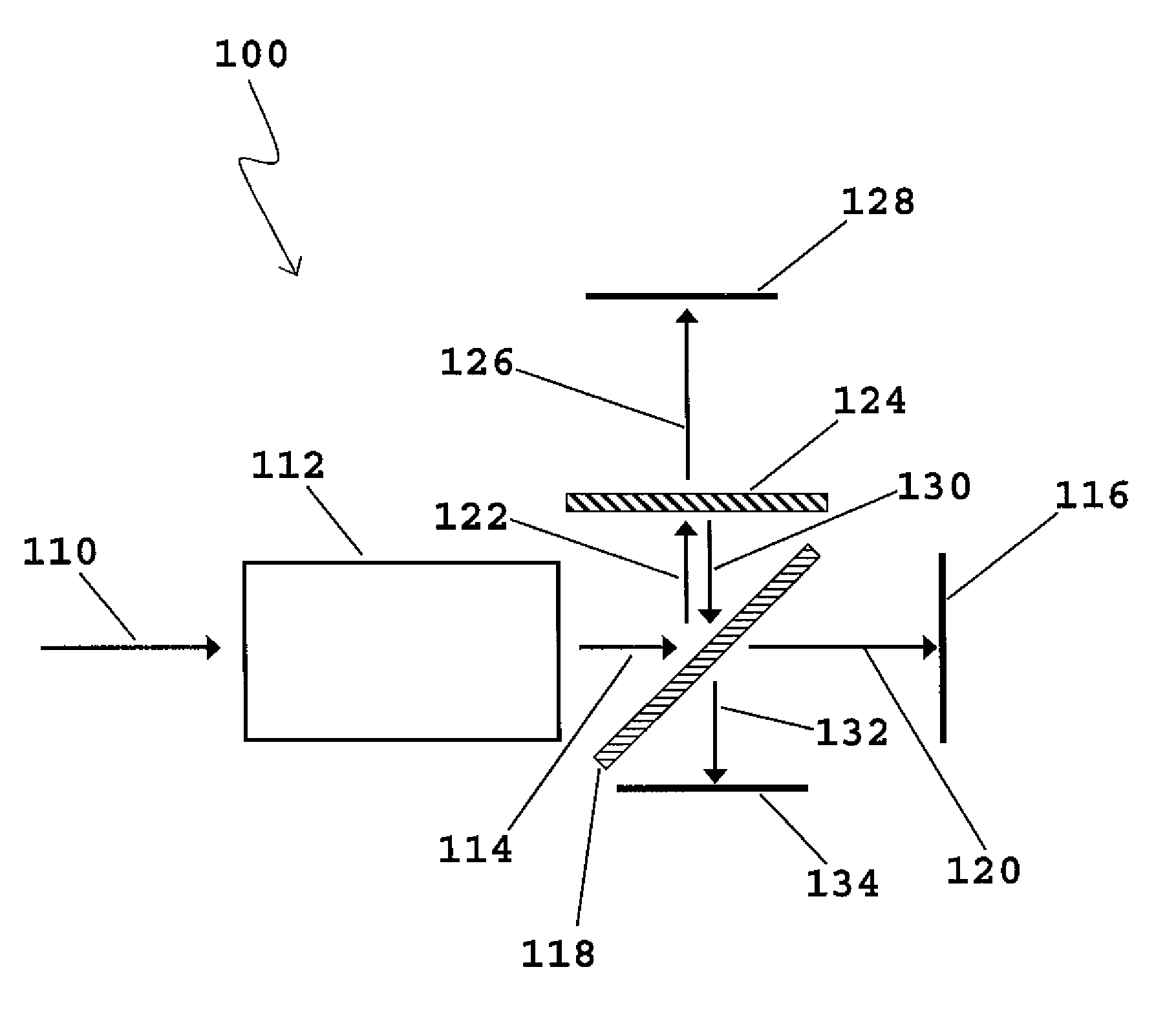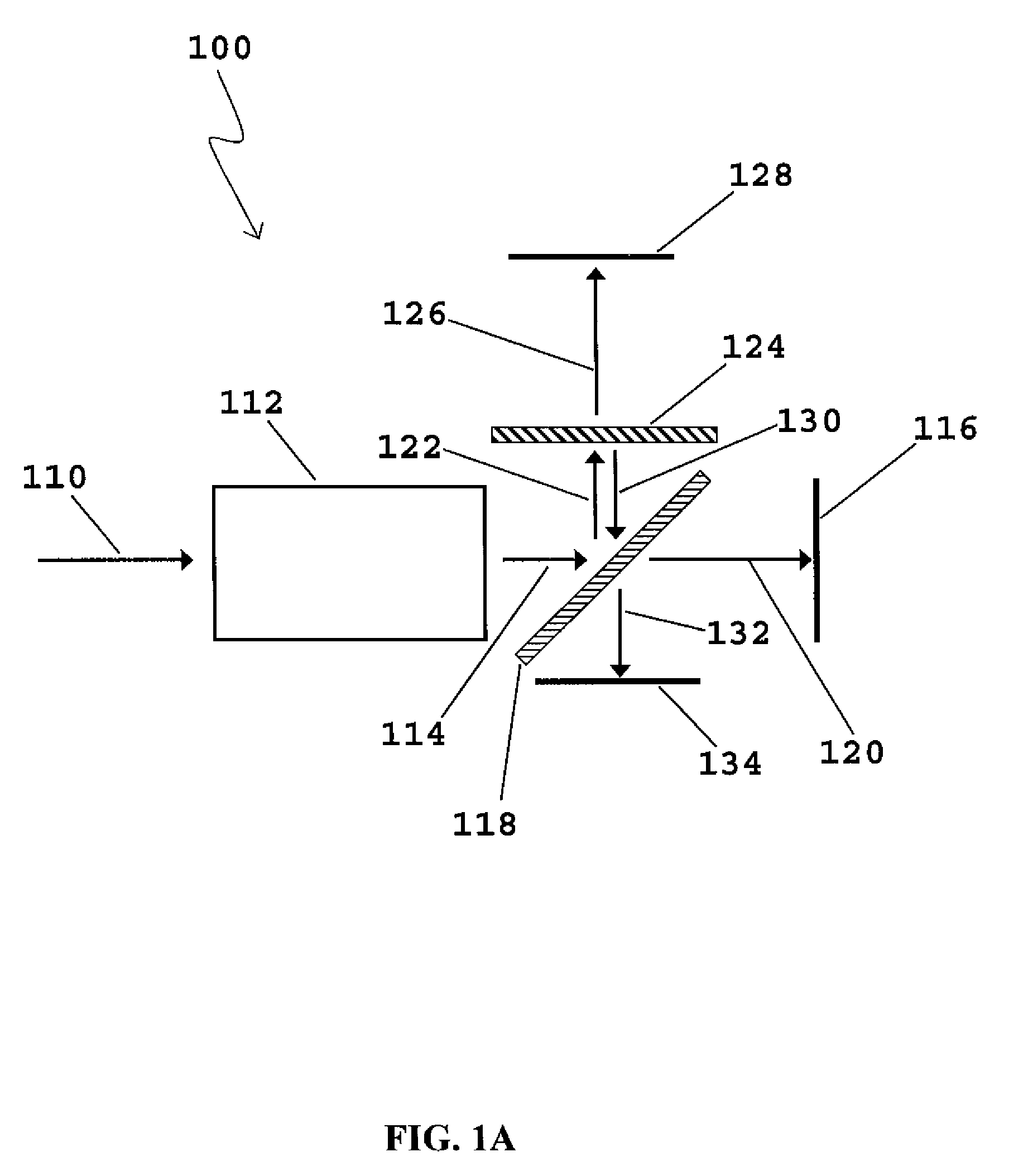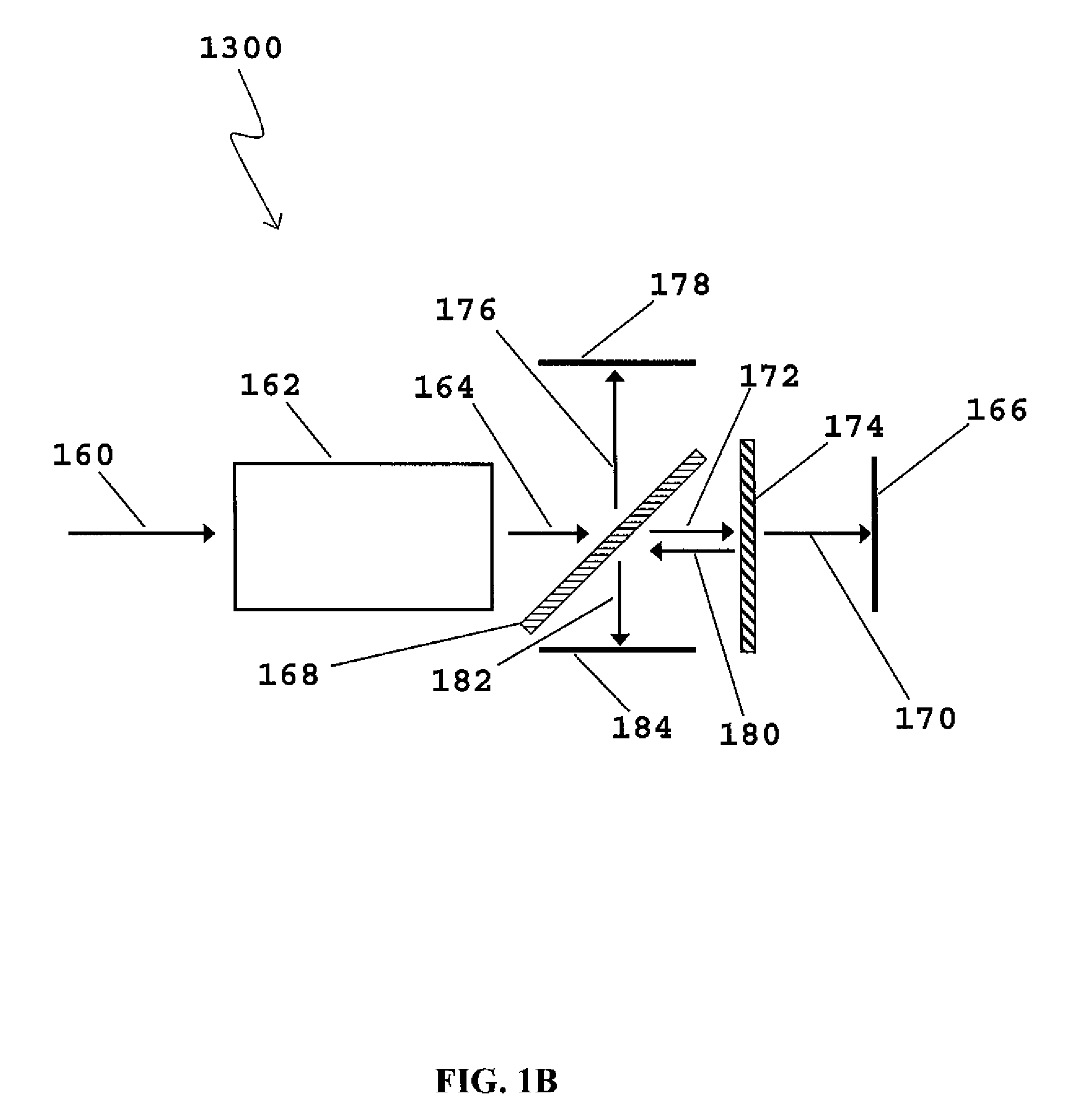Whole beam image splitting system
a whole beam and image technology, applied in the field of multi-beam image splitting system, can solve the problems of not describing the method of optically producing multiple images on multiple sensor arrays simultaneously, and the method of splitting an image-forming beam into sub-images, so as to achieve high dynamic range image, effectively collimate, and increase camera framerate
- Summary
- Abstract
- Description
- Claims
- Application Information
AI Technical Summary
Benefits of technology
Problems solved by technology
Method used
Image
Examples
embodiment 100
[0051]FIG. 1A is a schematic diagram of embodiment 100 of the present invention which utilizes a pair of beamsplitters to split the light from a single imaging system so as to produce three spatially-identical images on three separate detector planes. Referring to FIG. 1A, optical radiation 110 preferably from an object (not shown) is incident on imaging lens system 112. Any imaging or image forming lens system may be used in this embodiment of the invention. For example, any of the camera lenses manufactured by Nikon, Olympus, Panavision, or Thales Angenieux may be used as imaging lens system 112. Image-forming beam 114 exits the imaging lens system 112 as a converging image beam and is incident on beamsplitter 118, preferably oriented at a 45-degree angle to the path of image-forming beam 114.
[0052]Beamsplitter 118 is preferably thin; for example it may be 0.5 mm thick and made of glass with flat and parallel front and back surfaces; or it may comprise a so-called “pellicle” beams...
embodiment 1300
[0059]FIG. 1B is a schematic diagram of embodiment 1300 of the present invention. Referring to FIG. 1B, optical radiation 160 preferably from an object (not shown) is incident on imaging lens system 162. Image-forming beam 164 exits the imaging lens system 162 as a converging image beam and is incident on beamsplitter 168, preferably oriented at a 45-degree angle to the path of image-forming beam 164. Beamsplitter 168 is preferably thin; for example it may be 0.5 mm thick and comprise glass with flat and parallel front and back surfaces; or alternatively it may comprise a so-called “pellicle” beamsplitter, such as Part Number NT39-482 from Edmund Optics.
[0060]As a result of this beamsplitter arrangement, first reflected beam portion 176 is directed toward image sensor 178, where it forms an image, and first transmitted beam portion 172 is incident on beamsplitter 174, which is preferably oriented perpendicular to first transmitted beam portion 172. As a result, second transmitted be...
embodiment 200
[0064]FIG. 2 is a schematic diagram of embodiment 200 of the present invention. Referring to FIG. 2, optical radiation 210 preferably from an object (not shown) is incident on imaging lens system 212. Image-forming beam 214 exits imaging lens system 212 as a converging image beam and is incident on beamsplitter 218, which is preferably oriented at a 45-degree angle to the path of image-forming beam 214. As a result, first transmitted beam portion 220 continues toward image sensor 216, and first reflected beam portion 222 is reflected toward beamsplitter 224, which is preferably oriented perpendicular to first reflected beam portion 222. As a result, second transmitted beam portion 226 passes through beamsplitter 224 and forms an image on image sensor 228. Second transmitted beam portion 226 typically does not need to pass through a corrective lens system since neither it nor light beams 210, 214, or 222 ever pass through tilted beamsplitter 218.
[0065]First transmitted beam portion 2...
PUM
 Login to View More
Login to View More Abstract
Description
Claims
Application Information
 Login to View More
Login to View More - R&D
- Intellectual Property
- Life Sciences
- Materials
- Tech Scout
- Unparalleled Data Quality
- Higher Quality Content
- 60% Fewer Hallucinations
Browse by: Latest US Patents, China's latest patents, Technical Efficacy Thesaurus, Application Domain, Technology Topic, Popular Technical Reports.
© 2025 PatSnap. All rights reserved.Legal|Privacy policy|Modern Slavery Act Transparency Statement|Sitemap|About US| Contact US: help@patsnap.com



